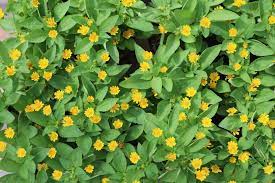
Sunflowers, with their striking blooms and towering stalks, are not only a beloved symbol of summer but also a diverse and fascinating group of plants. From the petite dwarf varieties to the colossal giants, sunflowers come in a multitude of shapes, sizes, and colors, each possessing its own unique charm. In this comprehensive guide, we embark on a journey to explore the classification and various species of sunflowers, uncovering the rich tapestry of diversity within this iconic genus, Helianthus.
**Taxonomy of Sunflowers**
Sunflowers belong to the genus Helianthus, which is part of the Asteraceae family, commonly known as the aster, daisy, or sunflower family. Within the genus Helianthus, there are approximately 70 species, each classified based on distinctive characteristics such as flower morphology, growth habit, and geographic distribution.
**Common Sunflower (Helianthus annuus)**
The common sunflower, Helianthus annuus, is perhaps the most recognizable and widely cultivated species in the genus. Originating from North America, this annual plant is characterized by its large, solitary flower heads with bright yellow petals surrounding a central disk of small florets. Common sunflowers vary in height, ranging from dwarf varieties measuring only a few feet tall to towering giants that can reach heights of over 10 feet.
**Perennial Sunflowers**
In addition to the annual common sunflower, there are several perennial species within the genus Helianthus. These include the swamp sunflower (Helianthus angustifolius), maximilian sunflower (Helianthus maximiliani), and prairie sunflower (Helianthus petiolaris). Perennial sunflowers are known for their longevity and ability to return year after year, often forming dense clumps or spreading via rhizomes.
**Wild Sunflowers**
Across the diverse landscapes of North and Central America, wild sunflowers can be found thriving in a variety of habitats, from prairies and meadows to marshes and woodlands. These wild species, such as the woodland sunflower (Helianthus divaricatus) and the desert sunflower (Helianthus niveus), exhibit a range of adaptations suited to their specific ecological niches, from drought tolerance to shade tolerance.
**Specialty Sunflowers**
In addition to the traditional yellow-flowered varieties, there are specialty sunflowers that boast an array of unique characteristics. These include ornamental sunflowers with unusual petal shapes or colors, such as the red sunflower (Helianthus annuus ‘Red Sun’) and the chocolate sunflower (Helianthus annuus ‘Italian White’). Specialty sunflowers are prized for their decorative value in gardens and floral arrangements, adding a splash of color and intrigue to any landscape.
**Hybrid Sunflowers**
Hybridization has led to the development of countless hybrid sunflower varieties, each bred for specific traits such as disease resistance, uniformity, or high oil content. Hybrid sunflowers often exhibit enhanced vigor and productivity compared to their wild or heirloom counterparts, making them a popular choice among farmers and gardeners alike.
**Cultural Significance and Uses**
Throughout history, sunflowers have held immense cultural significance, symbolizing adoration, vitality, and resilience across diverse cultures and civilizations. In addition to their symbolic value, sunflowers have practical uses as well, providing nutritious seeds, edible oil, and valuable wildlife habitat.
**Conclusion**
From the humble common sunflower to the exotic specialty varieties, the world of sunflowers is teeming with diversity and wonder. Whether adorning garden borders, brightening bouquets, or providing sustenance for birds and bees, sunflowers continue to captivate and inspire us with their beauty and versatility. As we celebrate the myriad forms and functions of these radiant blooms, we are reminded of the endless possibilities that unfold when we embrace the rich tapestry of biodiversity that surrounds us.